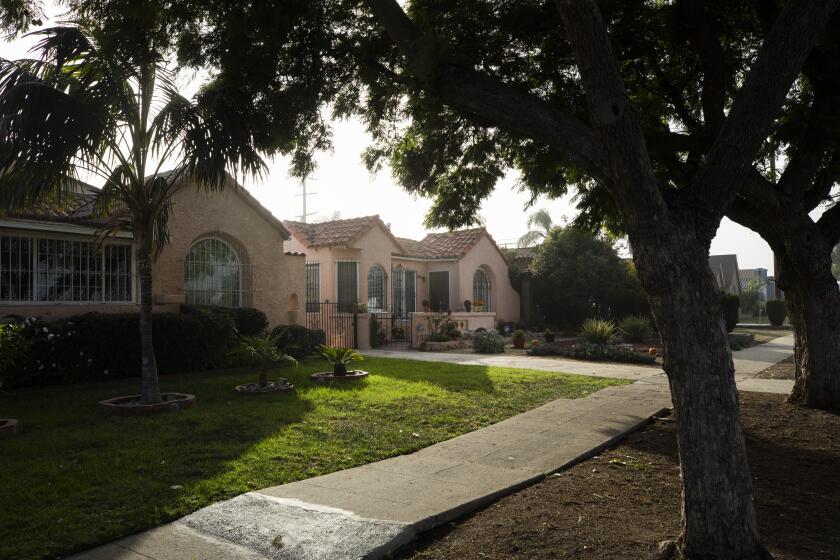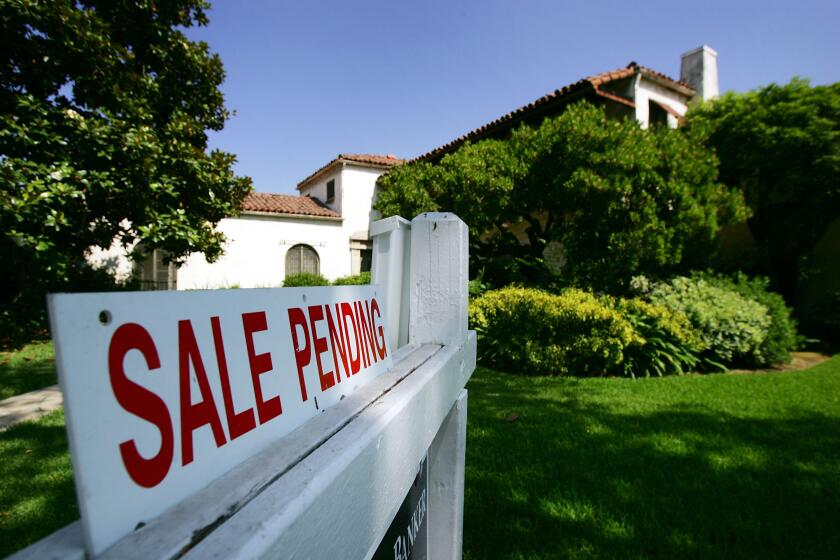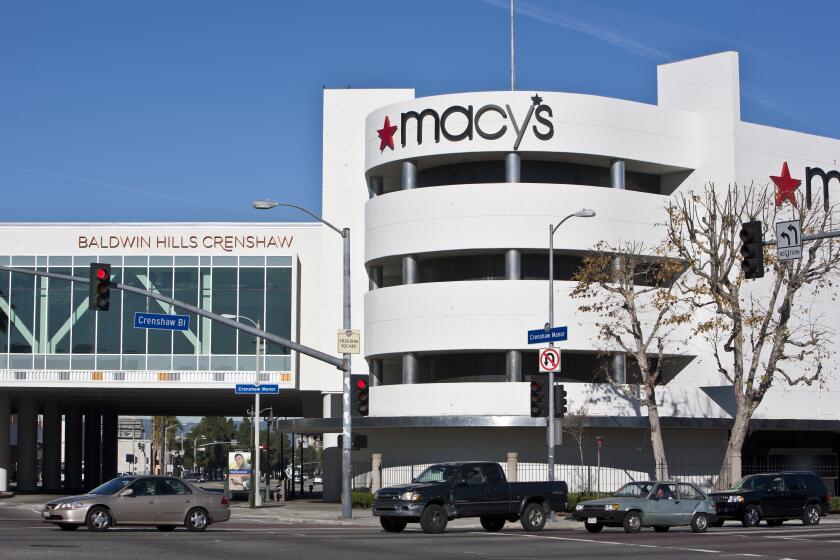
- Share via
A smile crossed my face when a local NBC outlet recently touted 90-year-old U.S. Postal Service employee Leroy Brown. He has worked for the federal government for 70 years, most of that time for the post office, and has no plans to retire. My father worked at the post office’s World Way location in Westchester. He is 84, and while he did not make it to 70 years of service, I feel his 45 years was rather impressive.
Like Mr. Brown, my father joined the Postal Service after a stint in the Army, where he collected several boxing championship trophies that sat in his craft room at our home in Morningside Park. Our neighborhood was featured in the L.A. Times during the 1992 “riots” as a place that did not burn, owing to the responsible residents. I always felt conflicted about that idea. The people in my neighborhood were proud, but framing us as an exemplar was not fair. We had jobs and owned our homes.
Our house off Slauson Avenue could go for double what we paid for it. Yet my husband and I have dreams for our family — and this neighborhood.
When I was growing up, it was a relatively calm, predominantly African American Los Angeles neighborhood. But the childhood I had in L.A. is no longer possible for most African Americans. We now live in exurbs across the county, dealing with some of the worst effects of the climate crisis and urban sprawl, including forced migration, social isolation and physical health ailments.
SoFi Stadium now overlooks my childhood home. My parents picked our yellow house on the corner with its expansive frontyard and honeysuckle-filled backyard because it was less than a 15-minute drive from my father’s job. I lived in that house until I went away to college.
My mother was a stay-at-home mom. She woke me up, burned my breakfast and took me to the local Catholic school, St. Eugene’s. After school ended, I walked the few short blocks home with my friends. We all did our homework that our mothers would check, and then played until the streetlights came on.
The ‘house burden’ metric that compares income to shelter costs goes a long way toward explaining Southern California’s housing crisis.
All of this happened in a neighborhood filled with homeowners who worked as clerks and carriers for the post office, public school teachers, social workers for L.A. County, and nurses who worked at Centinela and King hospitals. A neighborhood where most of my friends attended college but often were unable to obtain professional employment in the area after they graduated.
But Los Angeles has been an incredible disappointment. When my mother’s family came to L.A. at the turn of the 20th century, it was filled with opportunities. Architect Paul R. Williams was not just the first Black person on the Los Angeles Planning Board, he was on the very first Planning Board in 1920. In 1913, W.E.B. Du Bois said of the city, “Nowhere in the United States is the Negro so well and beautifully housed.”
But now, the Black poor in L.A. either must take their Section 8 vouchers and live in the desert, where affordable housing can be found, or fall further into poverty, or leave.
It’s not just another department store dying off. For many, the Baldwin Hills store had as much to do with identity as it did with shopping.
Some say that there is no tragedy in the slipping away of Black Los Angeles. It isn’t just happening here. In many major U.S. cities, the Black working poor are being moved to the hinterlands. And the Black working and middle class have been given the message to just move back to the South, where we were once enslaved.
The choice of living in the exurbs of Los Angeles or the South for L.A.’s Black population harms the cultural richness of the city. Its leaders must work to preserve the working class. This requires more careful urban planning and policies that improve people’s material well-being. Los Angeles needs a targeted increase in housing density, making it more affordable for people with less money. The county should pass a job guarantee program that includes professional and service tracks with an eye toward eradicating anti-Black bias in Los Angeles employment. Expanding and making permanent L.A.’s universal basic income program would complement California’s earned income tax credit.
Only policies like these can stem the tide of gentrification that is pushing African Americans and other members of the working class out of Los Angeles’ Metro area. Only then will L.A. be the example of progress it once was for people like my parents. Only then can the kind of childhood I grew up with exist again.
L. Lo Sontag is an urbanist and economics fellow at the New School for Social Research in New York.
More to Read
A cure for the common opinion
Get thought-provoking perspectives with our weekly newsletter.
You may occasionally receive promotional content from the Los Angeles Times.













